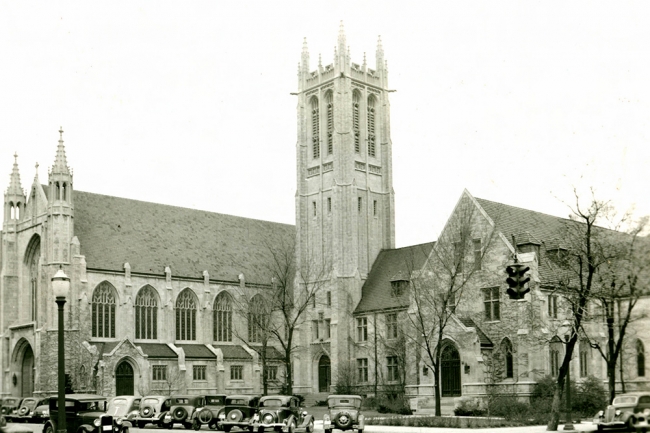In November 1927, the members of Covenant Presbyterian Church dedicated their first building. Costing the congregation $515,000, the church was one of the most expensive churches ever constructed in Springfield. Following the fourteenth-century English Gothic style, this gray Indiana limestone church stands as a statute to a heightened quality of craftsmanship and expression of a unique twentieth century design. The accomplished Philadelphian architect George Savage designed the church, in addition to over 500 churches throughout the United States. Born in Scotland in 1874, Savage immigrated to the United States in 1885 and later graduated from the Drexel Institute of Technology. His expansive church has space for 914 attendees with the availability to accommodate 186 more by opening the doors in the main vestibule directly under the nave gallery.
The magnificent stained glass windows in the church, designed by P.J. Reeves of Philadelphia, are exquisite, allowing light to pour into the sanctuary. The windows on the west aisle portray the miracles of Christ, while those on the east aisle illustrate biblical parables. On the west side of the transept, Savage designed two windows portraying the four evangelists, each holding books and quills. A rose window depicting a traditional symbol of Christ flanked by cherubs, faces the congregation. Directly opposite, at the south end of the church, the ascension window is framed chronologically with incidents from the life of Jesus. Ten clerestory windows in the nave are accented by blue and red patterned windows using two different patterns of stone tracery, a popular element of the fourteenth-century English Gothic style. The ornamentation and symbolism of Covenant Presbyterian is consistent with the Christo-centric iconography found in most Christian churches.
Gazing up onto the dominating 114 foot tower outside, one can see two tiny angels acting as the “watchers of the door.” Above them are four additional angels that hang horizontally at the corners casting down on parishioners as they enter the church. Inside the tower, an 1848 bell from the original church still hangs and is occasionally rung for special events. The expansive Covenant Presbyterian Church is a significant work of local architecture from the Jazz Age recalling traditional Christian ornamentation and iconography.

